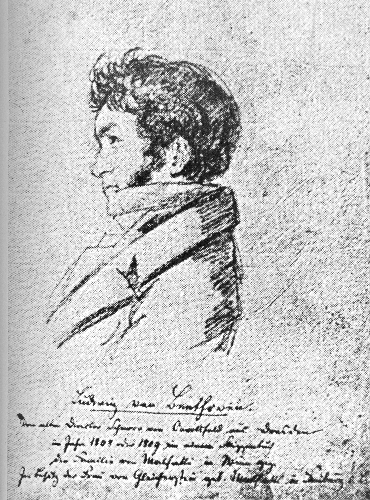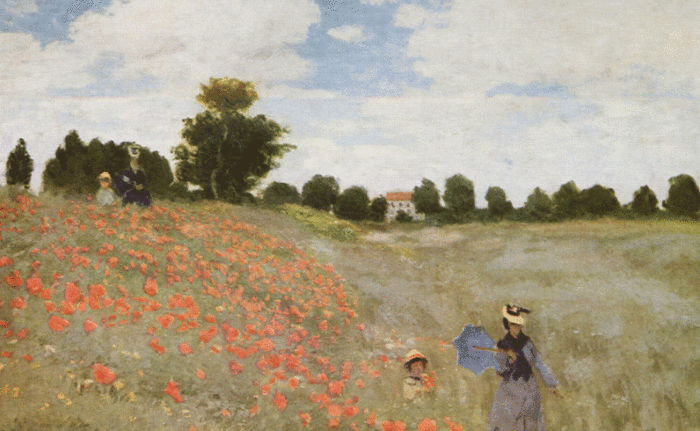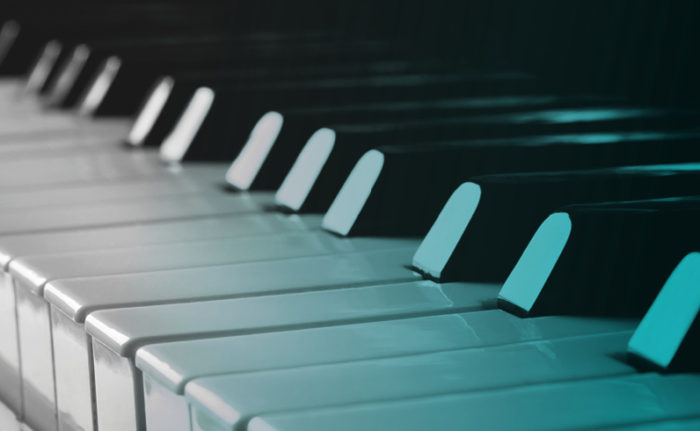On May 1, 3 & 4, the Houston Symphony presents Beethoven 7 & Mozart, a program featuring one of Beethoven's most popular symphonies. In this post, discover how Irish folk music may have inspired this "apotheosis of the dance."

Though Beethoven began sketching ideas for a new symphony almost as soon as his Sixth had been completed in 1808, the main work on his Seventh Symphony began in the autumn of 1811. The piece was completed by the following summer and premiered to great public acclaim in December 1813; it has enjoyed remarkable popularity ever since.
Among the most high-spirited of Beethoven’s works, the symphony is particularly notable for the prominent role that rhythm plays throughout: characteristic rhythmic motifs pervade each movement. Beethoven’s pupil Carl Czerny suggested that Beethoven was inspired by the metrical patterns of Classical poetry. The symphony’s lively rhythms inspired Richard Wagner to regard it as “the apotheosis of the dance” (on one occasion, Wagner proved as good as his word when he performed an interpretive dance to the second movement, accompanied on piano by his unsuspecting houseguest, Franz Liszt). Commentators have also noted the rustic, Arcadian character of many of the Symphony’s themes, perhaps influenced by the fact that Beethoven composed while arranging Scottish, Irish, and Welsh folksongs at the behest of Edinburgh-based publisher George Thomson.
The first movement begins with a portentous introduction:
After a series of opening chords, powerful rising scales alternate with a lyrical melody introduced by the oboe. The introduction fades away on a single repeated note, which soon articulates the jig-like rhythm that dominates the rest of the movement. Creating a pastoral atmosphere, the flute introduces a dancing theme based on this rhythm. In place of the usual contrasting second theme, the music continues to develop this main idea until reaching a grand pause. The first time, the pause leads to a return of the dancing flute theme and all that followed it; the second time, the pause leads to an intense developmental passage.
After the music passes through many keys, the flute theme returns in the violins above a rushing accompaniment, carried aloft by the development’s momentum. Suddenly, it comes to a halt; amid the half-light of woodwind solos, the movement then reaches its true climax before continuing with a varied reprise of its other main ideas. Near the end, a grand pause once again stops the music; this time, a long crescendo ensues, leading to an ebullient conclusion.
Perhaps the most enthralling of all Beethoven’s symphonic movements, the following Allegretto has made a profound impression on listeners from the beginning. Three years after the Symphony’s premiere, one critic wrote that it “speaks inwardly even to those who have no training in music; by means of its naïveté and a certain secret magic it irresistibly overcomes them […]” After a mysterious introductory chord in the woodwinds, the lower strings intone the incantatory rhythm that continues throughout. As more instruments enter, this idea grows in power, until the woodwinds introduce a more lyrical, contrasting theme (softly accompanied by the main rhythm in the lower strings). These two ideas alternate, reaching a climax and fading away. Hauntingly, the movement ends with the same woodwind chord that began it.
The third movement has an ABABA form; the fleet, playful opening section alternates with a slower, songlike theme that may have been based on an Austrian pilgrim’s hymn. For Berlioz, this hymn-like theme was “very much in the spirit of landscape painting and the idyll.”
The festive finale has a direct connection with Beethoven’s aforementioned folksong project; at the end of his arrangement of the Irish folksong “Save me from the grave and wise,” Beethoven appended a short coda which bears a striking resemblance to the main theme of this movement. Interestingly, the song’s final verse contains the lines “Hence with wisdom, dull and drear,/And welcome folly and adventure:/Cease my song—a sound I hear/The planxty [a dance tune] comes—the dancers enter.” Perhaps the finale is this merry dance.
After the whirlwind of the main theme, a transition leads to a contrasting melody: a lilting tune for violins whose delicacy is undercut by loud woodwind offbeats and irregular rhythms. As in the first movement, a grand pause precedes a wild development. After a reprise of the movement’s main themes, this final dance whirls to a breathtaking ending. —Calvin Dotsey
Don't miss Beethoven 7 & Mozart on May 1, 3 & 4! Learn more & get tickets.



